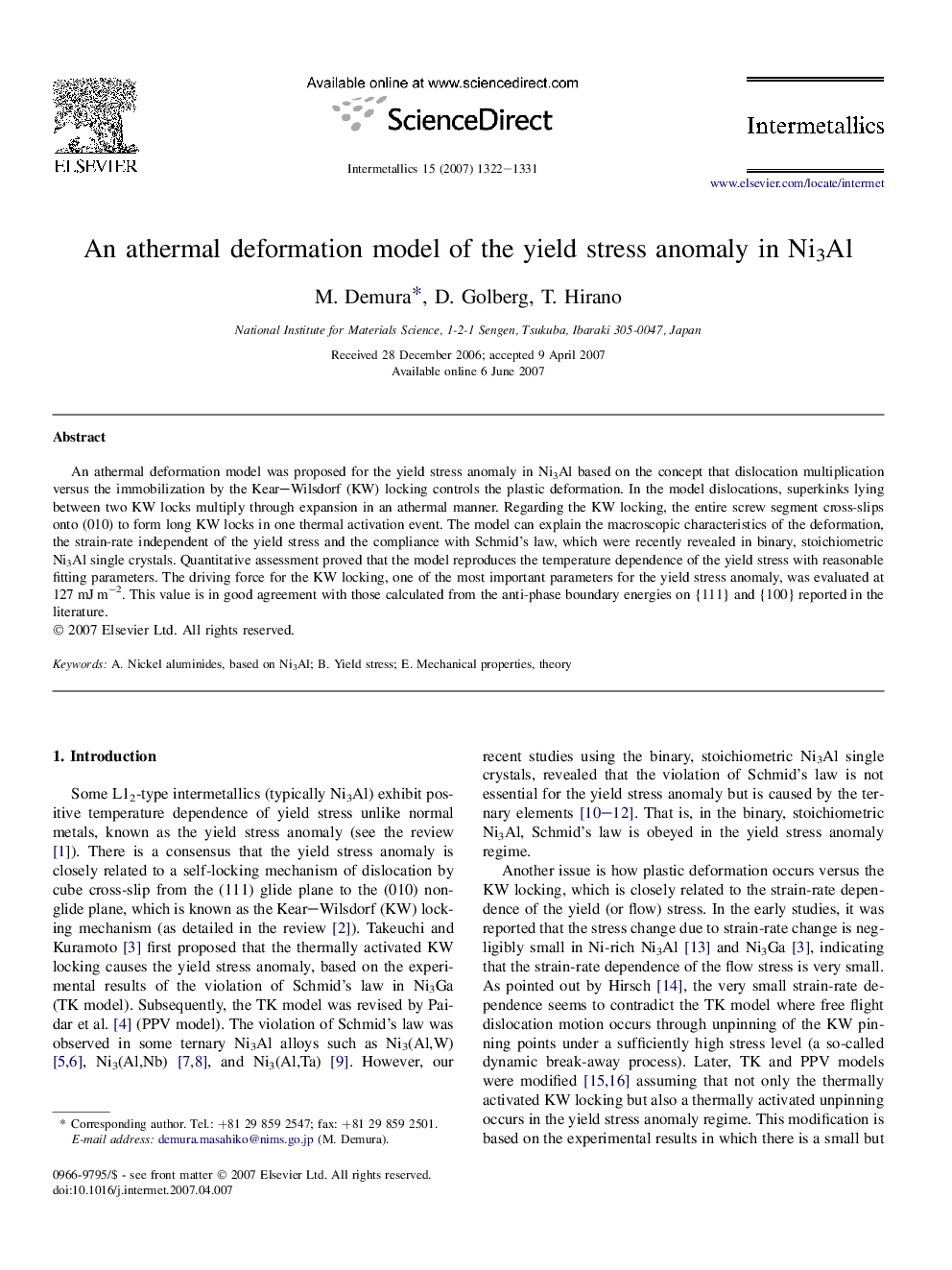| Article ID | Journal | Published Year | Pages | File Type |
|---|---|---|---|---|
| 1601485 | Intermetallics | 2007 | 10 Pages |
An athermal deformation model was proposed for the yield stress anomaly in Ni3Al based on the concept that dislocation multiplication versus the immobilization by the Kear–Wilsdorf (KW) locking controls the plastic deformation. In the model dislocations, superkinks lying between two KW locks multiply through expansion in an athermal manner. Regarding the KW locking, the entire screw segment cross-slips onto (010) to form long KW locks in one thermal activation event. The model can explain the macroscopic characteristics of the deformation, the strain-rate independent of the yield stress and the compliance with Schmid's law, which were recently revealed in binary, stoichiometric Ni3Al single crystals. Quantitative assessment proved that the model reproduces the temperature dependence of the yield stress with reasonable fitting parameters. The driving force for the KW locking, one of the most important parameters for the yield stress anomaly, was evaluated at 127 mJ m−2. This value is in good agreement with those calculated from the anti-phase boundary energies on {111} and {100} reported in the literature.
